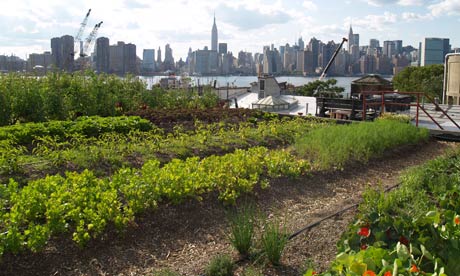Zero Net Energy (ZNE) structures use only as much power as they are able to produce. For instance most structures use electricity. A ZNE building might have photovoltaic solar cells on the roof to produce that electricity.
During the summer months, when the panels produce more electricity than the structure requires, the excess is sold back to the utility grid. During the winter months, when the solar panels are less efficient or even covered with snow, electrical energy that was originally sold to the grid would be purchased providing the needed electrical energy. In this manner, the net consumption of grid tied energy is zero. And because most electrical utility grids rely on carbon based fuels, the carbon energy footprint of the structure approaches zero, something most would agree is good for the environment.
Oftentimes a variety of different systems power and support the ZNE structure. Take for example a zero net energy residential structure. Many decisions about what systems to incorporate into the home will be decided during the design phase often many months before construction actually begins. One focus of the design process is concerned with energy management and conservation while another focus of the design process is energy production and harvest. For instance, conservation focuses on developing super insulated wall and roof systems to prevent the loss of heat energy or to reduce cooling needs. To further recude the homes energy requirements, energy control systems such as automated lighting controls, occupancy sensors, and consumption monitoring systems, are designed. For energy production and harvest, passive and active solar systems are often utilized. Photovoltaic (PV) solar panels may occupy much of the south facing roof surfaces. Geothermal, which harvest heat from the earth, may also be employed to heat the structure. Solar panels may also be used to heat water for domestic use or heating purposes. Small wind turbines may also be used to help power the structure.
One of the most important aspects of creating the ZNE structure is energy modeling. This takes place early in the design phase. It’s important to estimate accurately the energy requirements of the finished structure. An energy census is completed and sophisticated computer modeling is employed. Once the energy needs of the structure are estimated, systems can then be employed to provide enough energy to the structure so that it consumes no more than it produces and can indeed be called a ZNE building.










